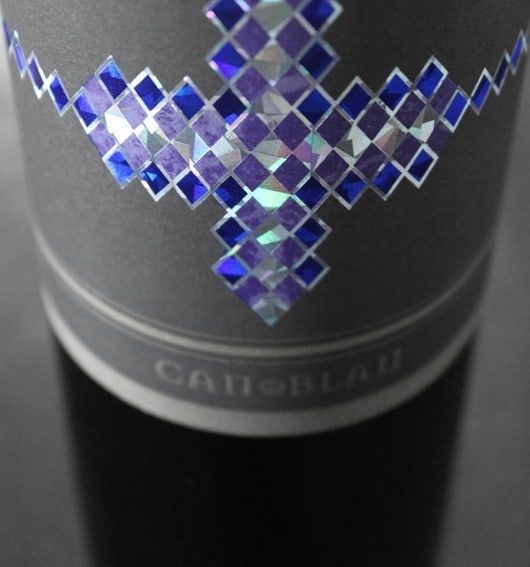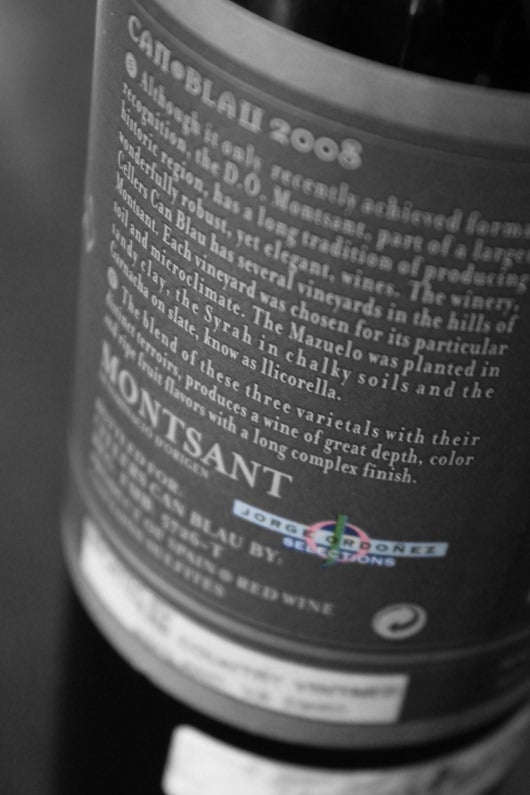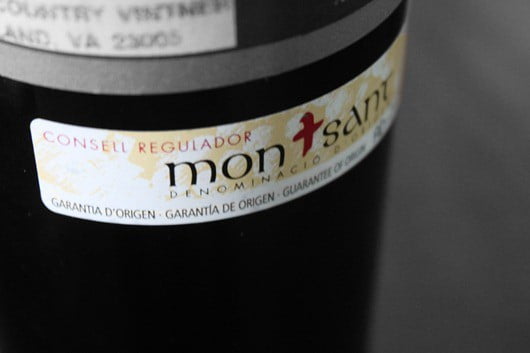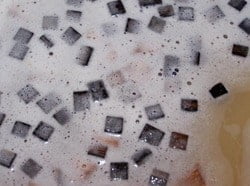
Grapes
Mazuelo 40%, Syrah 40% Garnacha 20%
Facts
-
I’ve been on a bit of a Jorge Ordonez (the importer of this wine) kick lately! As the “bringer-inner” (I just made up that term) of some of the best Spanish wines in the U.S, he’s been fighting to help the wines of Spain wines out of obscurity since 1987. When looking at a bottle of Spanish wine, look for the Jorge Ordoñez importer information on the back label, it’s as close to a 100% guarantee of quality as you can get! I know for a fact that I haven’t tasted a single-one of his wines that I didn’t think was anything less than outstanding for the price
-
Ol’ Jorge also seems to be a little-bit of a marketing wiz! He’s known for giving very cool and modern looking labels to wines which may have otherwise been completely overlooked by the consumer. The Can Blau is no exception.
-
The Mazuelo [pronounced with a lisp ~ Mah-thoo-eh-lo] grape, also known as Cariñena or Carignan, is one of the most widely planted varietals in the world. It produces thick-skinned grapes, which are rich in color, and high in tannins and acidity
-
Garnacha {Gar-nah-chah} grape is also known more widely as Grenache. The wines made from it tend to be more fruity,and be big in flavor and body. If grown in a climate that’s too warm (Australia for example), its alcohol can get a little wild and out of control.
-
I would love to tell you some fascinating facts about the Can Blau winery; but I can’t for the life in me find ANYTHING on the Information Super Highway. Whenever this happens I’m overjoyed! It means that I’ve found a small family-owned and operated winery that puts all their effort and money into the wine, and not into marketing to convince you that the wine is good! The proof is in the bottle…which still has a cool label…!
 Place
Place
-
Wines from the Montsant region of Spain tend to be powerful and red, and can taste very similar to the more famous Priorat wines of Spain (without the hefty price tag). Look for "Priorato" toward the right-hand-side of the map.
-
A slightly lower elevation is one reason Montsant wines cost considerably less than those from Priorat, as the land is easier to work.
-
Montsant is said to to have a lot of the same "llicorella" (slate) soils as the Priorat region. The grape vines seem to pull a lot of flinty, anise and mineral flavors out of the soil which can be tasted in the grapes.
-
Master Sommelier and Master of Wine Doug Frost has high hopes for this little-known Spanish region; “Red wines from the Montsant region are the next big thing from Spain (watch out, Priorat). So get drinking now, while the prices are still low and the quality just keeps getting better“.
Taste
The Can Blau, on the nose shows dark black-fruit (black-cherry and plum), intense licorice and herbs. Very rich, and reminiscent of a Priorat, but needed to give it a few minutes to "unwind".
Medium in body, doesn’t overwhelm. The rich dark-fruit continues with plenty of licorice, good minerality, and a hint of bitter chocolate. Love the finish, really stays with you without being too "astringent".
I had a vague idea of what I was looking for before I opened this bottle, and I’m glad to say I wasn’t disappointed. I also think that a few more years in the bottle wouldn’t be a bad thing for the Can Blau.
Pairing
Like the wines from neighboring Priorat, it has been suggested that Montsant wines work better with food than without (although this wine tasted pretty good to me by itself). Try the Can Blau Montsant with ossobuco, lamb shank, duck, venison, or even pizza. In terms of cheese, give thought to aged Pecorino, Parmesan, Pecorino or Parmesan.
Price
$16.99
Some of the values coming out of Spain right now are ridiculous (in a good way)! Don’t be confused for thinking that everything coming out Spain is peaches and cream though, there’s also a lot of cheap and nasty, generic tasting garbage! Choose wisely!



